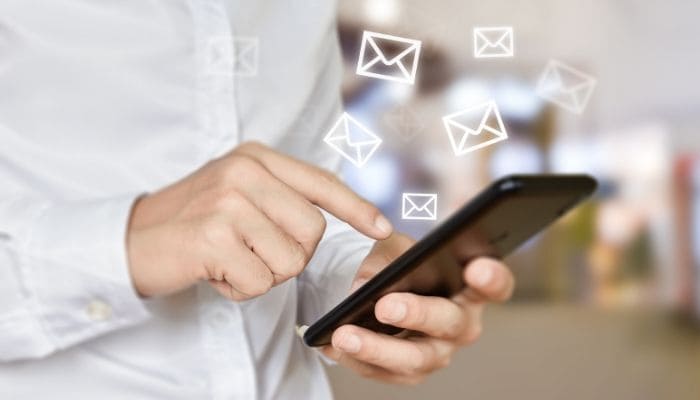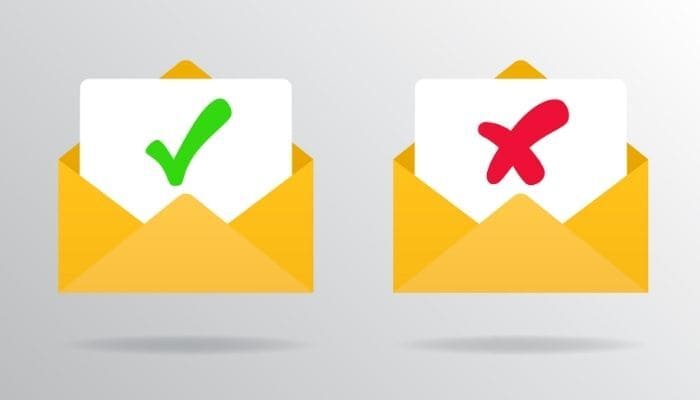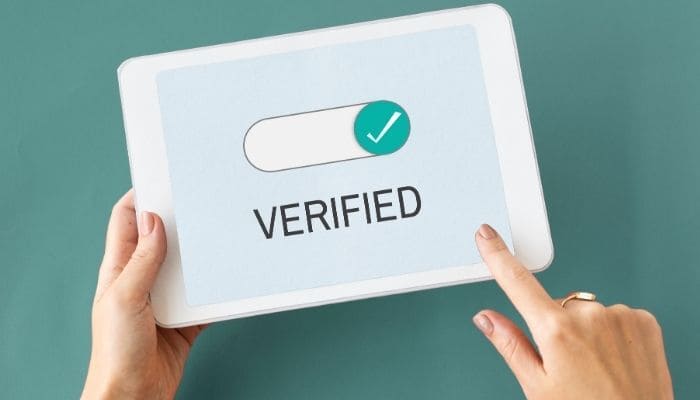
Landing in the Inbox: Brian Minick at Managing Editor Live
Email validation. ZeroBounce. Landing in the inbox. These were some of the topics content strategist Mary Ellen Slayter and our COO Brian Minick talked about at this year’s Managing Editor Live conference.
Brian Minick, COO of ZeroBounce, explains email deliverability in a relatable way that’s also easy to comprehend.
This October, I had the opportunity to watch an Ask Me Anything (AMA) webinar hosted by Mary Ellen Slayter, publisher of Managing Editor magazine. It was a segment for the Managing Editor Live virtual conference, where many experts were invited.
Having interviewed Minick myself, I knew the webinar would be rich with valuable, practical advice for anyone who’s into email marketing.
If you didn’t get a chance to attend, here are some highlights from the AMA, which has been edited for clarity and brevity. Mary Ellen asked all the right questions and Brian did not disappoint!

ZeroBounce helps emails land in the inbox
So what does ZeroBounce do? One of the things Brian succinctly explains is how ZeroBounce helps senders land in the inbox.
ZeroBounce helps many different companies, mainly a lot of email marketers. Our job is to help you with landing in the inbox. We do that by helping you clean and sanitize your list of email addresses. And we also have three deliverability tools: inbox placement testing, blacklist monitoring, and email server configuration testing.
Related >>> Learn more about ZeroBounce and CEO Liviu Tanase
Is deliverability the same as delivered?
When people are reviewing email metrics and see the percentage that was delivered, that means those emails landed in the inbox, right? Not exactly. Minick explains.
Deliverability means in the inbox. It means your message got to the person that you were intending, and they actually have an opportunity to read it.
Where the confusion comes into play is that delivered does not mean delivered to inbox. That’s the piece of the puzzle that’s super important.
Delivered could be to the spam folder. Obviously, we all know how unhelpful being in the spam folder is. We don’t take those messages seriously. So landing in the inbox is super important. Deliverability is inboxing.
Related >>> Email Validation Glossary: The Most Common Terms in the Email Industry
What affects deliverability
Because deliverability means results, it makes perfect sense for senders to strive to improve it. But what affects deliverability?
One of the major pieces is your sending reputation. Your reputation is tied to several factors. Here are just a few:
- The domain you’re sending from – your .com, .net, whatever you might be using – that has a reputation piece behind it.
- The IP address you’re sending from has an influence on your reputation. Shared IPs are potentially risky if you have other people doing bad things.
- Also, the amount of bounces you get.
There are hard bounces and soft bounces that can happen whenever you send an email. Hard bounces raise a lot of red flags in the email space because you lose reputation, you lose credibility. And if you lose that credibility, email service providers aren’t as likely to deliver your message.
You want to get rid of the bad emails to improve your deliverability, which means your emails get through. Next, you want to get them into the inbox. Here, content can play a role, as well as configuration.

What are the categories of emails that aren’t desirable?
Particularly helpful was Brian’s rundown on the types of risky email addresses senders could have in their lists. These are some of the terms people in the industry use to categorize emails.
Valid.
It’s the simplest, easiest one to understand. Those are good, clean contacts. You should send to them. For us, valid is much like a postman going to a house. We look at it as electronically knocking on the door of that recipient to see if they exist. We go and knock, and we do find that this person exists, so they should accept mail.
Invalid.
We do that same procedure, but when we do that, we get a response such as Not there or The house doesn’t exist. We cannot connect to the mailbox. That would be a good reason to classify it as invalid. Of course, this is just an analogy – when validating emails, we do a much more detailed check.
Catch-all emails.
These are associated with servers or domains that will accept any mail you send to them – even if the email address isn’t correct or doesn’t belong to a real person.
So you can put blabla@domain.com and the mail server says it will go through, but actually, it’s very risky to send to. It might bounce or go to the wrong person, and then they’ll mark you as spam.
We have a scoring tool for catch-all emails, something proprietary to ZeroBounce because we’re really passionate about recovering those.
Spam traps.
These are the really bad ones. They’re mailboxes ISPs and blacklist providers create to catch people sending spam.
If you send to a spam trap, you’re going to get blacklisted from that provider, and it’s very hard to get off a blacklist. But spam traps are emails we can catch! It’s impossible to catch all of them, but we have some good partners we work with and also do in-house detection.
Abuse emails.
These are known complainers. For us, a complainer is a person that doesn’t unsubscribe from your emails, they just mark you as spam. That’s detrimental towards your campaign and your reputation and will eventually get you blacklisted. That’s a reason why you want to make it very easy for people to unsubscribe.
Unsubscribing is actually good. It’s hard to digest this, but it’s considered engagement. Someone clicked out of the email into your platform and unsubscribed. It’s better if they unsubscribe than mark you as spam, every day of the week, so don’t hide that button.
Do-not-mail (role-based and disposables)
Sometimes we call role-based and disposable email addresses do-not-mails.
Role-based emails are addresses like office@ or team@ and not everyone wants to keep these in their databases.
Disposables are sometimes called burner emails or 10-minute emails. They only last for a few minutes, then your message will bounce.
Those are the major categories that we detect at ZeroBounce, and we have a lot of subcategories, as well.

How to further validate catch-all emails
Catch-all emails, as Brian explains, are very risky. They can have a negative impact on your list health. However, some of them can be salvaged. Brian explains how ZeroBounce recovers some of those addresses.
Catch-all emails – or accept-all emails – are a known issue. Typically, they’re very risky to send to. If these people are not expecting your emails, you really shouldn’t send to them. That would be our standard advice.
However, we have come up with a way to try to recover some catch-all emails to the best of our ability. Enter: our A.I. email scoring tool.
First, you would run your list through the ZeroBounce email validator. Once you do, you’ll get a whole file called catch-all emails. This is as far as we can get it on the validation perspective.
Then, you would take that catch-all list and bring it into our scoring tool. We’ll an score it from zero to 10, based on the activity that we can find from different publishing partners and intent signals that we can get access to.
So, we try to give you confidence to whose mail will actually get delivered, based on what we see for the address. Usually, we can recover anywhere between 30 and 40% of catch-alls and give you a nine or a ten – which for us says 98% deliverability.
There will always be a one-off or something that changed yesterday, and we didn’t catch that. Nonetheless, the focus is to get 30 – 40% back out of a list that is really risky.
Quantity isn’t everything
It can be challenging for some email marketers to stomach the idea of removing a good percentage of the addresses on their list. The rationale that they’re potential sales is a common mindset in traditional sales. “It’s a numbers game,” you commonly hear. It’s not exactly the same in email marketing. Quantity does not mean quality.
It’s a hard pill to swallow, but if you have a million contacts on your list, we’re probably going to remove 10 to 30% of those contacts and tell you, “They’re bad. Don’t send to them.”
Typically people are like, “No, those are sales. Those are quantity. Quantity, quantity.” It’s quality. That’s the important piece.
You have to think past your list size. Instead, think of its quality. Now, when you play the percentage game, the deliverability percent goes up, your engagement percent goes up, your click through rates go up, and you have a better reputation.
So that stuff goes full 360. The interaction happening with your emails build into your reputation, so quantity plays a role.

Invalid contacts cost money
One of the other great points Brian makes: there’s a cost associated with keeping bad email addresses on your list.
Removing invalids saves money on storage costs, which is another nice piece, but a lot of people don’t think about that. They pay a lot of money to store a bad contact.
Why pay for that monthly, yearly, however your contracts are negotiated? It’s the hardest one for people to swallow, but they try it once and see the result.
That’s when everything starts to click, and we do the best we can to help you get into people’s inboxes. So, 600,000 messages in the inbox is way better than 900,000 or a million in spam – all day, every day of the week.
You have to experience that change and that difference to understand the value of email validation.
How do you know how often to clean your list?
It can be challenging to know how often you should scrub your email list, and Mary Ellen wisely asked about it. As it turns out it may vary, but Brian was happy to shed light on it.
We recommend twice a year. Every six months, do another cleaning just to make sure. I would also tell you to take a peek into your data and think about it on a segmentation purpose.
Related >>> Three signs you need to scrub your email list
The average lifespan of email addresses depends on their type
Free emails – the Gmails, the Yahoos, the AOL’s – don’t churn as often as business emails do. So my answer might vary based on how your list works. If you’re very heavy on the free email side, you might be able to get away with cleaning your list every eight or nine months. I still have my email address from 12 years ago.
But on the business side, the average tenure of an employee is under two years. So there’s data churning daily, weekly, monthly, for sure. And I would highly recommend six months at the minimum.
Related >>> The pandemic’s effect: 25% of your B2B email list may be bad

On dealing with unengaged subscribers
One of the interesting things Mary Ellen brings up is the issue of unengaged subscribers. The issue of not wanting to lose a valuable contact can prevent many people from removing them. Brian sheds some interesting light on this issue.
If they’re not engaging with your emails, think about the percentage game: they’re lowering your stats. They’re not improving anything, so I don’t hate the idea of removing them after no sales or engagement in 120 days. I would say try it and send the campaign without them and see the results.
There are some emails I do get that I just read and I don’t engage with. I don’t click. So if they’re not opening ever, then yeah, that’s a wasted cent, in my opinion. It’s just increasing your chances of getting listed, or maybe that’s a spam trap. There are a lot of bad boxes out there, so avoid them. What’s the point?
Watch the webinar
This exchange was full of easily digestible information! You can watch the entire webinar, then visit Managing Editor – a digital marketing magazine that helps marketers drive more sales through content.
Many thanks to Mary Ellen Slayter for inviting us to be a part of Managing Editor Live!
Need to scrub your list?






